An enclosed cab, according to EPA regulation, has a nonporous barrier which totally surrounds the occupant(s) of the cab and prevents contact with pesticides outside of the cab. Enclosed cabs must meet Department of Labor and Industry requirements (L & I: 1-800-547-8367). Enclosed cabs in good repair offer protection from dermal exposure to pesticides. The EPA has implemented an enclosed cab policy, which allows an applicator to wear less personal protective equipment (PPE) than what may be required for outside or open cab applications. A respirator must still be worn when and as specified by the label. Exceptions to personal protective equipment specified on the product labeling for that handling activity are permitted as provided in (e)(i) through (iv) of WAC 16-233-245 at http://apps.leg.wa.gov/WAC/default.aspx?cite=16-233-245. Note that applicators shall wear PPE if it is necessary to exit the cab and contact pesticide-treated surfaces in the treated area.
Airblast application of diazinon requires the use of enclosed cabs for all motorized ground equipment uses. Open cabs may be used when applying Diazinon 50W (EPA Reg. 66222-10) by airblast sprayer to apples when it is "not feasible" to use an enclosed cab. Applicators are permitted to use open cab airblast equipment provided they are wearing chemical resistant headgear and maximum PPE clothing required by the label. EPA has changed their previous position and considers "not feasible" to include other factors. WSDA will take into consideration whether a grower owns or has access to enclosed cabs, and other factors (i.e. need to spray multiple orchards with varying tree structures during a single spray operation).

